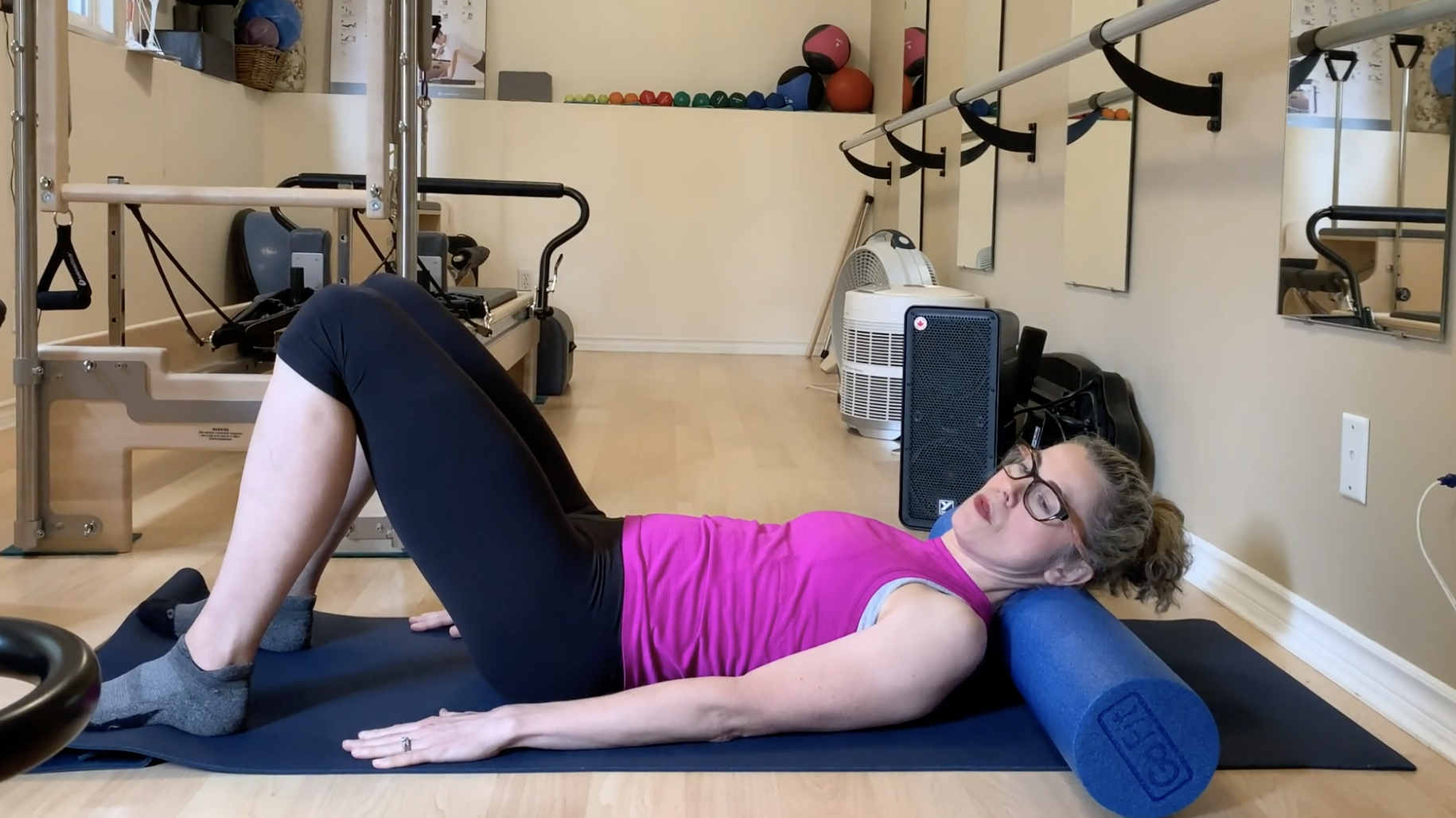Neck Pain Help
Massage, Stretching, and Strength
According to The Royal Dutch Society for Physical Therapy (KNGF): “Neck pain is described as an unpleasant sensory and emotional experience associated with actual or potential tissue damage in the neck region, which starts at the superior nuchal line and continues down to the level of the scapular spine. Neck pain includes whiplash-associated disorder, cervicogenic headache, and cervical radicular syndrome” (Bier et al., 2018).
In plain English: neck pain can show up from the back bump on your head to the top of your shoulder blade, and may radiate down your arm, and may cause a headache.
Little is known of the exact causes of persistent neck pain, the KNGF review indicates history of musculoskeletal issues and psychosocial distress (aka stress). From my experience, most common neck pain is from tightness in the muscles by various causes from stress to prolonged desk work to needing to strengthen the deep neck flexors. The second less common I see is cervical radiculopathy, also called a "pinched nerve." It occurs when a nerve in the neck is compressed or irritated where it branches away from the spinal cord. This may cause pain that radiates into the shoulder and/or arm, as well as muscle weakness and numbness.
It’s always a good idea to seek out medical advice if there are “red flags” present: like a recent fall, history of cancer, cerebrovascular disease symptoms (dizziness, nauseas, vomiting), stroke symptoms (numbness and weakness in face, arm, leg), and infection symptoms (fever, burning, redness). But thankfully red flags are rare.
The KNGF systematic review I am sourcing suggests manual therapy (massage), education of tissue healing times, exercise (strengthening the muscles of the neck), and use of a TENS (transcutaneous electrical nerve stimulation) machine to ease pain (Bier et al., 2018). Massage and exercise do show to be most favourable for outcomes (Hidalgo et al., 2018). I also find a heat pad and gentle stretching can also ease discomfort temporarily.
Massage:
An easy way to perform self massage is to lie the back of the neck and head on a soft foam roller and move the chin in yes movements (chin up and down) and no movements (turn head side to side) a bunch of times. But nothing beats a neck massage from a family member, or even better, a registered massage therapist.
Stretching:
I have three stretches that are my go to for tightness in the neck:
Ear to shoulder looking forward
Ear to shoulder looking up
Ear to shoulder looking down
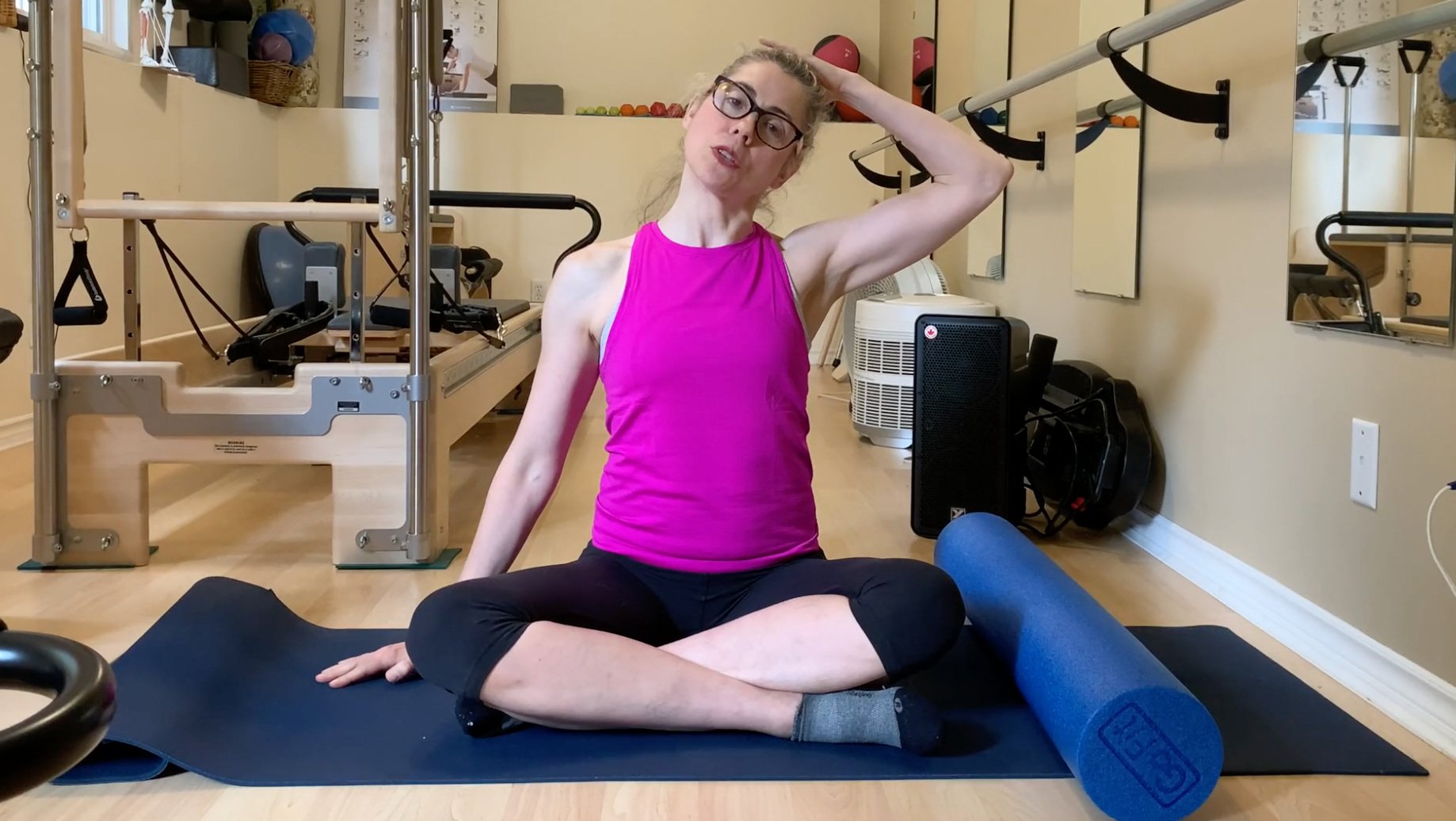

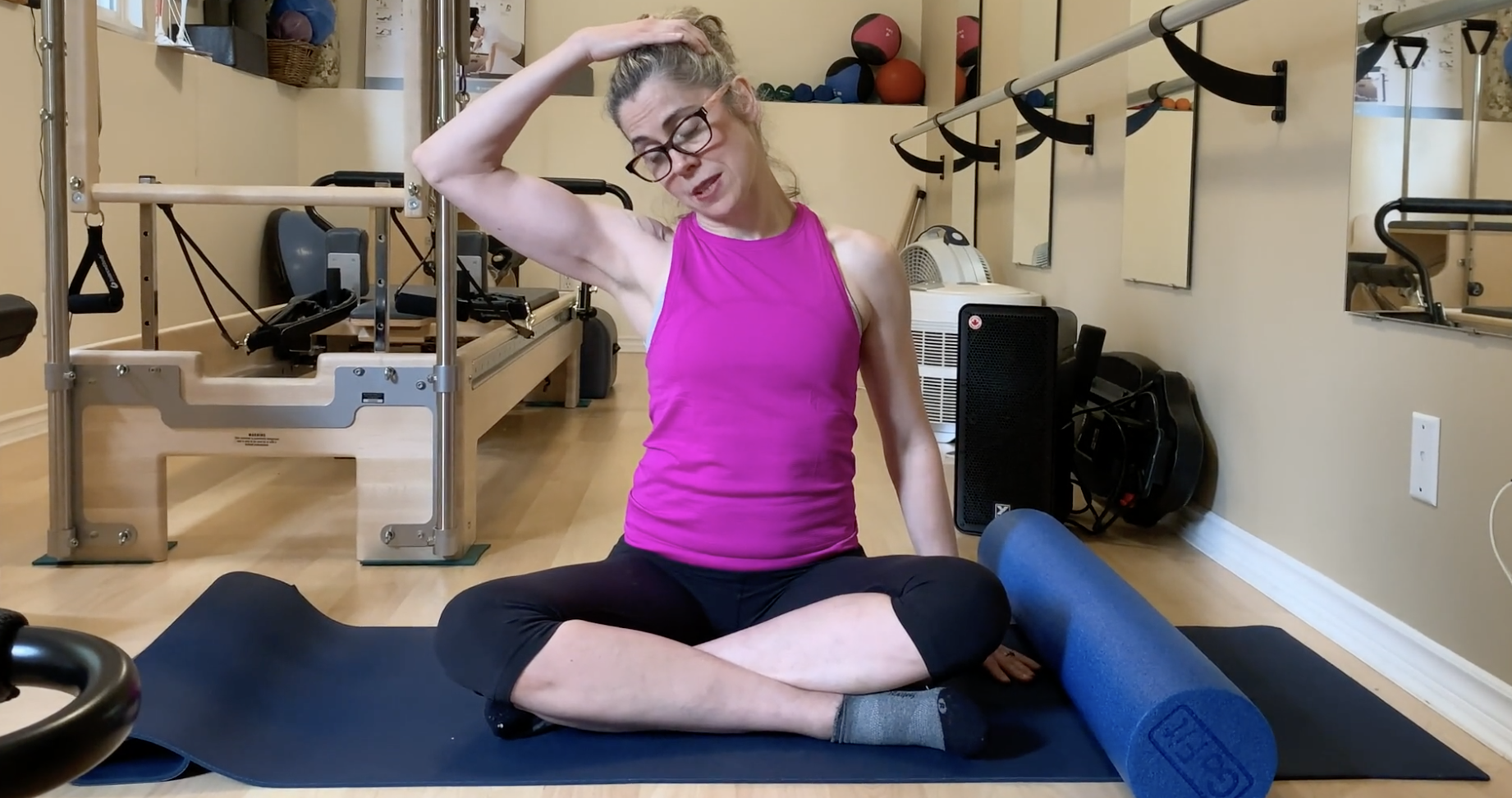
Exercises:
There are two beginning exercises I use to help clients strengthen their neck muscles:
Chin nods (keep back of head on floor)
Chin nod to chest life (chin nod FIRST then curl up)
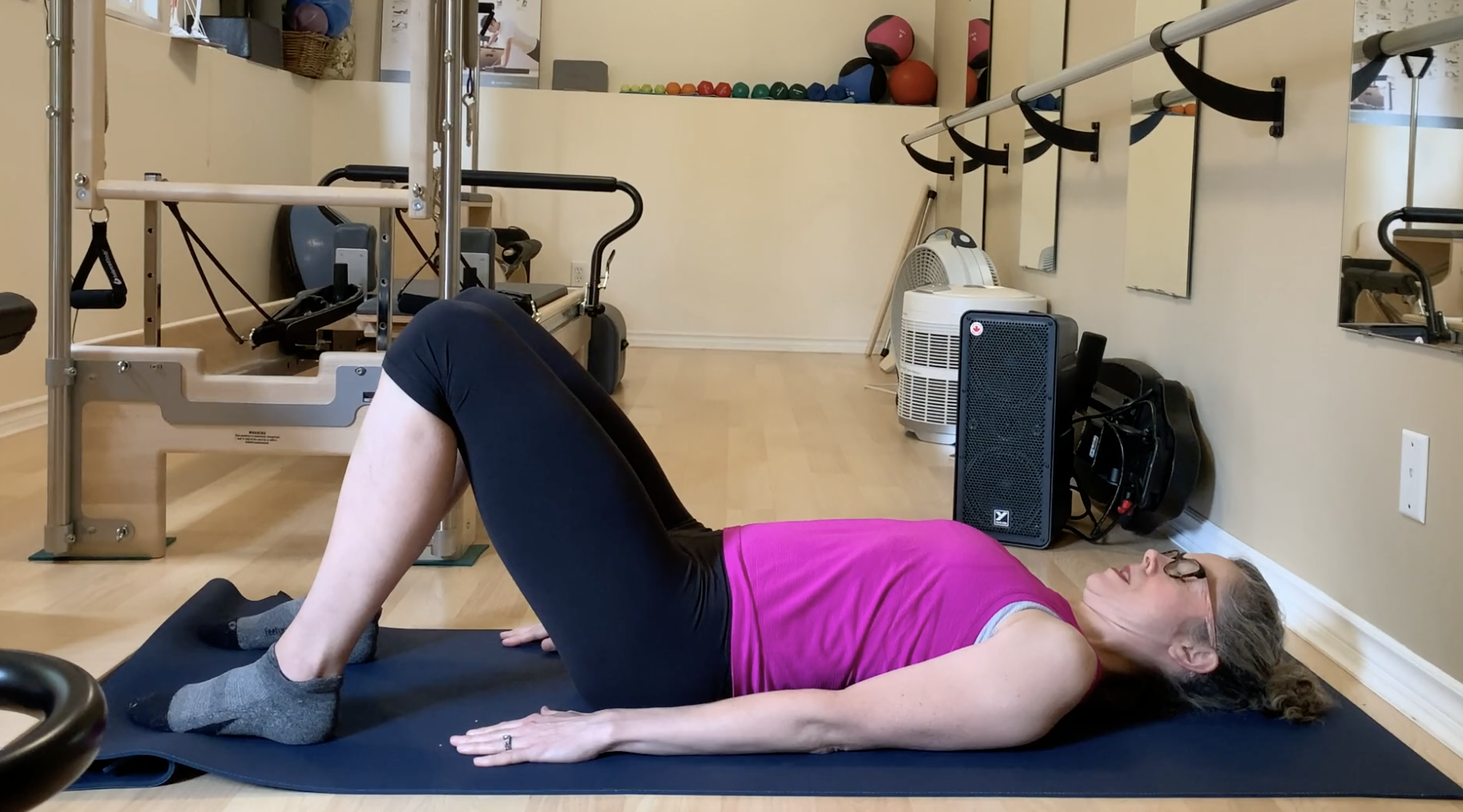
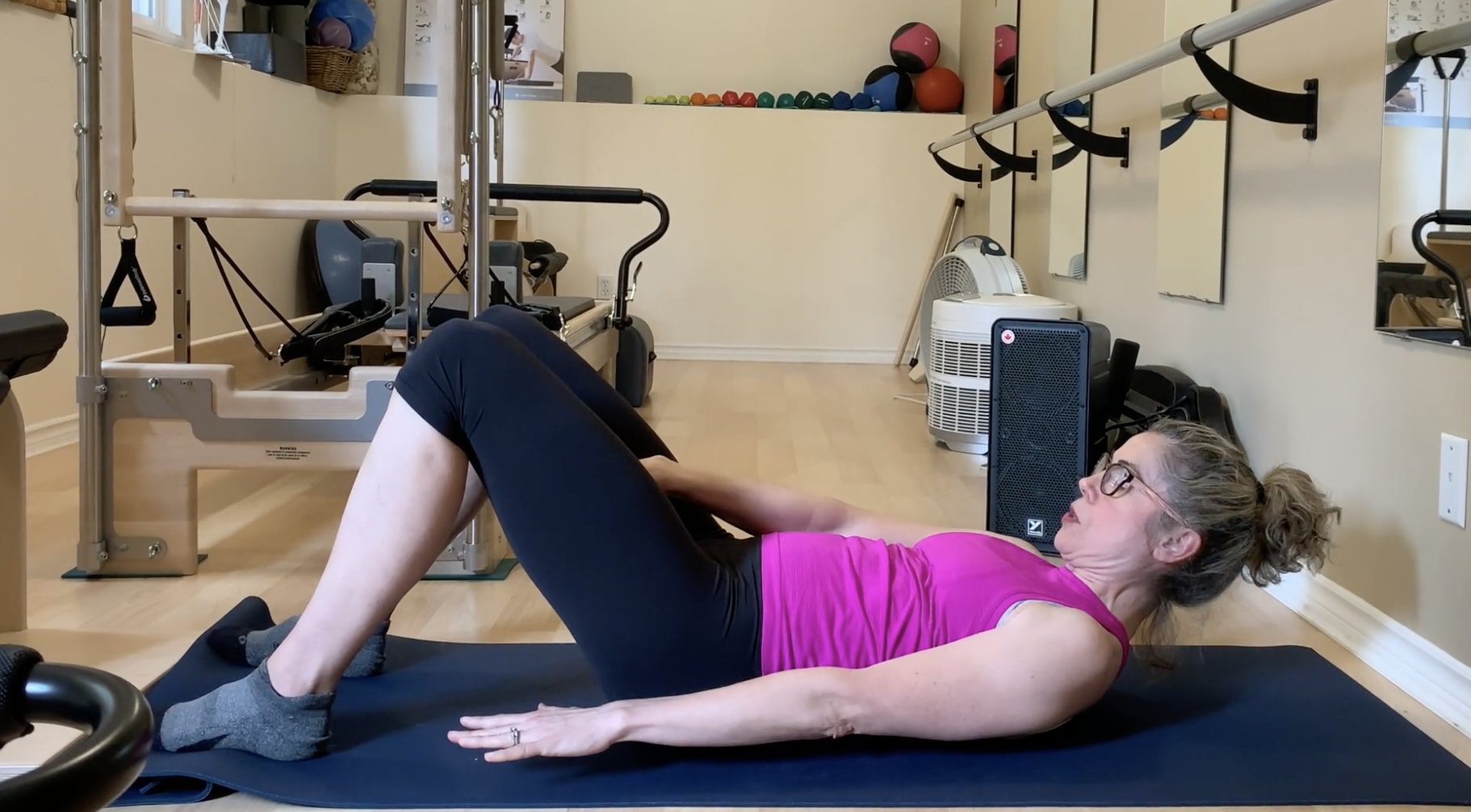
I have TWO filmed resources for you:
First half of the video are neck foam rolling and neck stretch movements
At the 1.5 minute mark are two neck strengthening exercises
Addressing sleep may also be helpful, as poor quality sleep can increase risk of neck pain by 4x (Auvinen et al., 2010). Depressive symptoms also increase the risk of pain by 4x (Carroll et al., 2004). It seems that mind set may have a role in decreasing neck pain as having a negative expectation of outcomes causes pain to stay around for longer (Mansell et al., 2021).
One factor that seems to help is expecting that the pain will eventually pass (Shearer et al., 2021). Knowing that most persistent neck pain does not last, usually gone within 3-6 months, sometimes staying around for 36 months can help the pain decrease (Vasseljen et al., 2013). Three years does seem like a long time, but it is better than pain lasting forever.
Let me know how the self massage, stretches, and exercises have helped with easing discomfort for your neck, I’d can provide further guidance, if necessary.
Resources:
Bier, J. D., Scholten-Peeters, W. G. M., Staal, J. B., Pool, J., van Tulder, M. W., Beekman, E., Knoop, J., Meerhoff, G., & Verhagen, A. P. (2018). Clinical Practice Guideline for Physical Therapy Assessment and Treatment in Patients With Nonspecific Neck Pain. Physical Therapy, 98(3), 162–171. https://doi.org/10.1093/ptj/pzx118
Hidalgo, B., Hall, T., Bossert, J., Dugeny, A., Cagnie, B., & Pitance, L. (2018). The efficacy of manual therapy and exercise for treating non-specific neck pain: A systematic review. Journal of Back and Musculoskeletal Rehabilitation, 30(6), 1149–1169. https://doi.org/10.3233/BMR-169615
Auvinen, J. P., Tammelin, T. H., Taimela, S. P., Zitting, P. J., Järvelin, M.-R., Taanila, A. M., & Karppinen, J. I. (2010). Is insufficient quantity and quality of sleep a risk factor for neck, shoulder and low back pain? A longitudinal study among adolescents. European Spine Journal, 19(4), 641–649. https://doi.org/10.1007/s00586-009-1215-2
Carroll, L. J., Cassidy, D. J., & Côté, P. (2004). Depression as a risk factor for onset of an episode of troublesome neck and low back pain. Pain, 107(1), 134–139. https://doi.org/10.1016/j.pain.2003.10.009
Mansell, G., Corp, N., Wynne‐Jones, G., Hill, J., Stynes, S., & Windt, D. (2021). Self‐reported prognostic factors in adults reporting neck or low back pain: An umbrella review. European Journal of Pain, 25(8), 1627–1643. https://doi.org/10.1002/ejp.1782
Shearer, H. M., Carroll, L. J., Côté, P., Randhawa, K., Southerst, D., Varatharajan, S., Wong, J. J., Yu, H., Sutton, D., van der Velde, G., Nordin, M., Gross, D. P., Mior, S., Stupar, M., Jacobs, C., & Taylor-Vaisey, A. (2021). The course and factors associated with recovery of whiplash-associated disorders: An updated systematic review by the Ontario protocol for traffic injury management (OPTIMa) collaboration. European Journal of Physiotherapy, 23(5), 279–294. https://doi.org/10.1080/21679169.2020.1736150
Vasseljen, O., Woodhouse, A., Bjrngaard, J. H., & Leivseth, L. (2013). Natural course of acute neck and low back pain in the general population: The HUNT study. Pain, 154(8), 1237–1244. https://doi.org/10.1016/j.pain.2013.03.032

